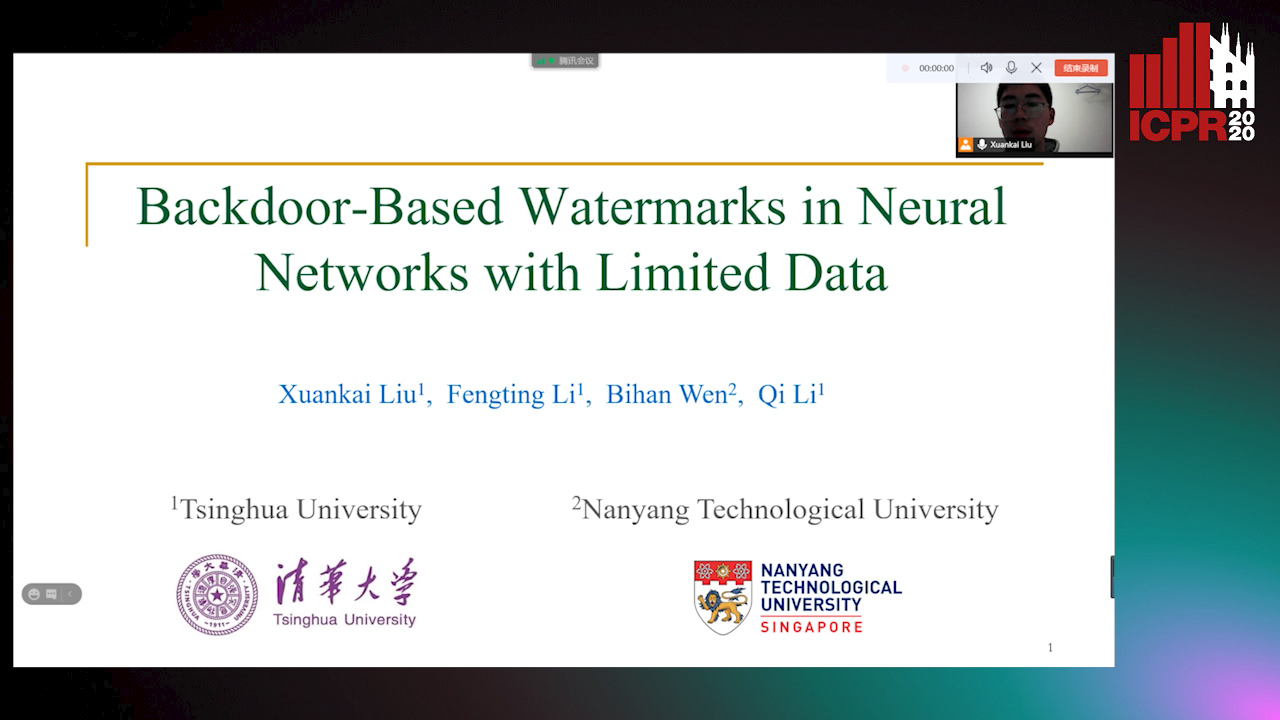Bihan Wen
Paper download is intended for registered attendees only, and is
subjected to the IEEE Copyright Policy. Any other use is strongly forbidden.
Papers from this author
Removing Backdoor-Based Watermarks in Neural Networks with Limited Data
Xuankai Liu, Fengting Li, Bihan Wen, Qi Li

Auto-TLDR; WILD: A backdoor-based watermark removal framework using limited data
Abstract Slides Poster Similar
Deep neural networks have been widely applied and achieved great success in various fields. As training deep models usually consumes massive data and computational resources,trading the trained deep models is highly-demanded and lucrative nowadays. Unfortunately, the naive trading schemes typicallyinvolves potential risks related to copyright and trustworthiness issues,e.g., a sold model can be illegally resold to others without further authorization to reap huge profits. To tackle this prob-lem, various watermarking techniques are proposed to protect the model intellectual property, amongst which the backdoor-based watermarking is the most commonly-used one. However,the robustness of these watermarking approaches is not well evaluated under realistic settings, such as limited in-distribution data availability and agnostic of watermarking patterns. In this paper, we benchmark the robustness of watermarking, and propose a novel backdoor-based watermark removal framework using limited data, dubbed WILD. The proposed WILD removes the watermarks of deep models with only a small portion of training data, and the output model can perform the same as models trained from scratch without watermarks injected. In particular, a novel data augmentation method is utilized to mimic the behavior of watermark triggers. Combining with the distribution alignment between the normal and perturbed (e.g.,occluded) data in the feature space, our approach generalizes well on all typical types of trigger contents. The experimental results demonstrate that our approach can effectively remove the watermarks without compromising the deep model performance for the original task with the limited access to training data.